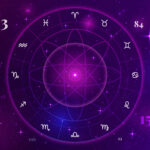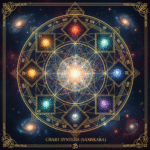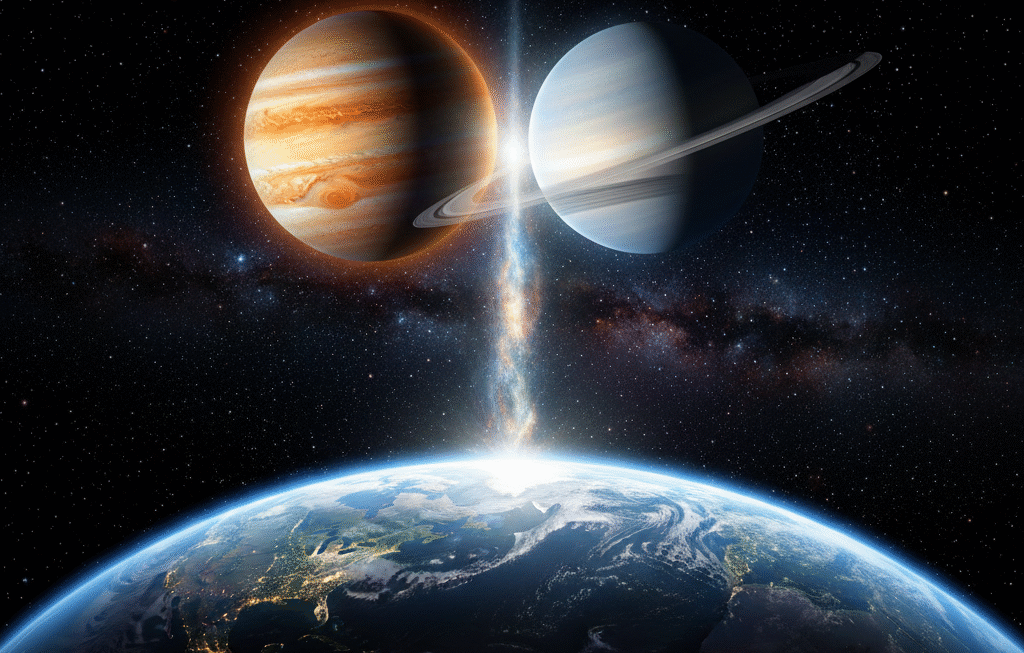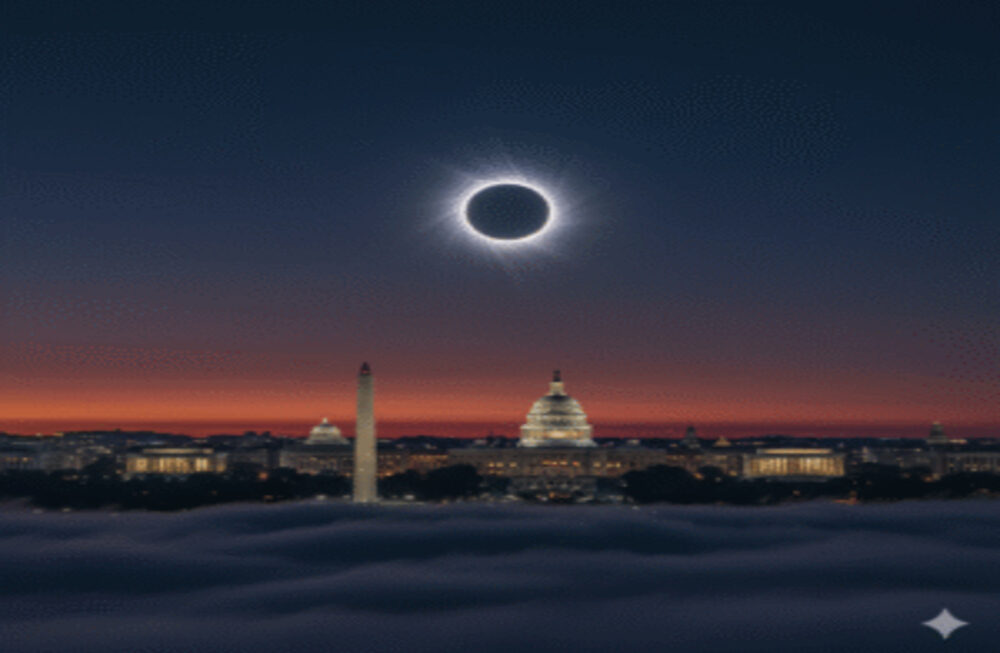Why do entire nations go through booms and busts, golden ages and collapses, wars and renaissances? Can the same cosmic forces that shape an individual birth chart also script the destiny of empires?
Welcome to Mundane Astrology — the astrology of nations, politics, and world events.
In the ancient Vedic tradition, astrology (Jyotish) was never limited to individuals. The sages of old looked to the heavens to understand the rise and fall of civilizations, the fate of kings, and the timing of global transformations. Today, we call this branch of astrology Mundane Astrology — from the Latin mundus, meaning “world.”
While personal astrology deciphers an individual’s karma, mundane astrology studies the collective karma of humanity, as reflected through the charts of countries, leaders, and historical epochs.
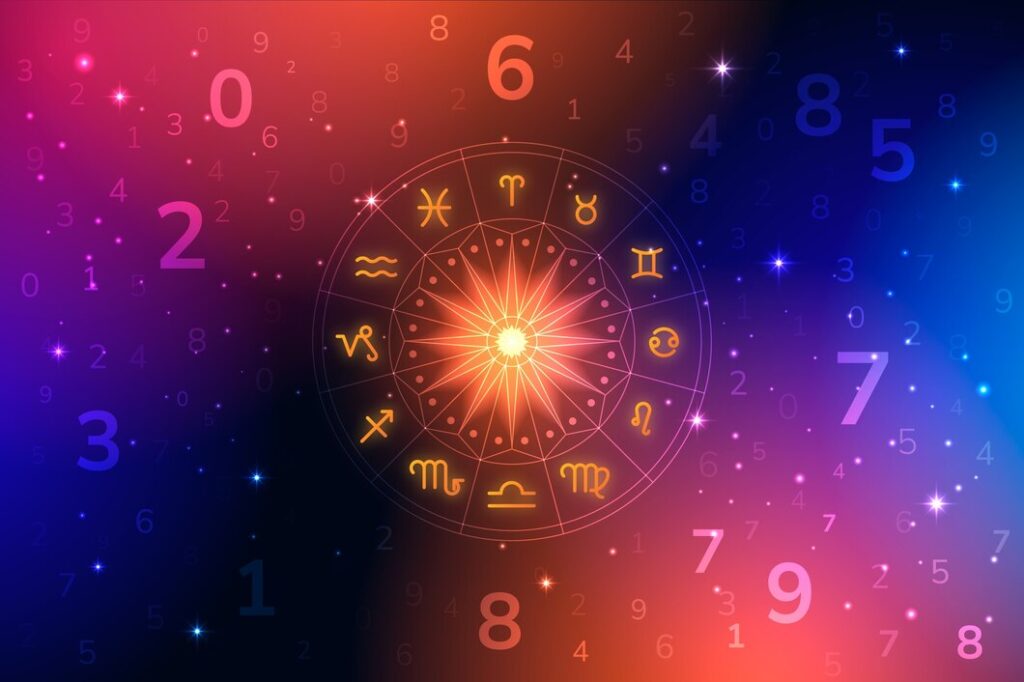
The Cosmic Blueprint of Nations
Every nation, like every person, has a birth moment — a moment when its identity crystallizes into being. For the United States, it’s July 4, 1776, the signing of the Declaration of Independence. For India, it’s August 15, 1947, the midnight hour of freedom. These are national charts, the starting points for understanding a country’s destiny.
In Mundane Astrology, we study these charts to interpret:
- Economic prosperity and decline
- Political upheavals
- Social and cultural evolution
- Natural disasters and wars
The same principles that apply to an individual’s horoscope — houses, planets, transits, and dashas (periods) — apply here too. But the canvas is vast, and the players are nations themselves.
Core Tools of World Astrology
Astrologers who practice world astrology use several cosmic tools to analyze global trends. Let’s explore the four pillars of this ancient science:
1. National Charts — The Soul of a Nation
A national chart represents the collective karma of its people.
In Vedic astrology, the 10th house shows the nation’s leadership and international standing, while the 4th house reflects the homeland and citizens. Malefic transits to these houses can indicate unrest, while benefic aspects may bring stability and prosperity.
For instance, during the 1947 partition, India’s chart showed powerful transits involving Mars and Rahu — symbols of separation, migration, and trauma — matching the upheaval on the ground.
2. Ingress Charts — The Pulse of the Planet
An Ingress Chart is drawn for the moment the Sun enters a cardinal sign — Aries, Cancer, Libra, or Capricorn.
These quarterly charts reveal the seasonal mood of the world. The Aries Ingress (Sun entering Aries) is especially important; it sets the tone for the global year ahead.
Mundane astrologers examine these ingress charts for each capital city to forecast national events: elections, reforms, social changes, or even the likelihood of conflict.
3. Eclipses — The Cosmic Shadows
Few celestial events are as charged as eclipses.
Ancient seers regarded them as portals of destiny — times when hidden truths surface and old structures crumble. When a solar or lunar eclipse occurs near a nation’s key chart points (Ascendant, Moon, or leader’s Sun), major events tend to unfold.
Consider the December 2019 solar eclipse, falling close to major planetary positions in the charts of several nations. Within months, the world was engulfed in the COVID-19 pandemic — a textbook case of an eclipse revealing collective vulnerability and transformation.
4. Major Conjunctions — The Great Cosmic Reset
Of all celestial cycles, the Great Conjunction of Jupiter and Saturn is perhaps the most significant in mundane astrology.
Occurring roughly every 20 years, this conjunction has long been known to herald major political and social shifts.
Opinion: The Great Conjunction of Jupiter (expansion) and Saturn (structure) is the most powerful timer of historical change.
Reason: Jupiter represents ideals, optimism, and growth. Saturn symbolizes discipline, governance, and contraction. When they meet, old systems dissolve, and new ones arise — socially, economically, politically.
Example:
For nearly 200 years, Jupiter and Saturn met in Earth signs (Taurus, Virgo, Capricorn), fueling the Industrial Revolution, material wealth, and territorial empires.
In December 2020, they met in Air sign Aquarius — marking humanity’s shift into the Age of Information, where data, technology, and networks rule.
The same year saw the world move online, remote work become the norm, and societies reimagine “community” through digital airwaves.
Restatement: By tracking these conjunctions, mundane astrologers decode the great chapters of human civilization itself.
Political Astrology (Vedic): Reading the Karma of Empires
In political astrology Vedic practice, the focus lies in the Dasas (planetary periods) of a nation’s chart.
For instance, when a country enters a Mars Dasha, themes of aggression, military buildup, or territorial assertion can emerge. Under Venus, arts, diplomacy, and prosperity often thrive.
Let’s take the Indian Independence Chart (August 15, 1947, 00:00 hrs, New Delhi):
- During its Moon Dasha (2015–2025), issues of national identity, emotions, and internal cohesion have dominated public discourse.
- The upcoming Mars Dasha (2025–2032) may signal a phase of bold reforms, assertive foreign policy, and rapid infrastructure expansion — all hallmarks of Mars’ energy.
In this way, mundane astrology becomes a lens through which national karma unfolds — not in isolation, but in rhythmic harmony with the cosmic clock.
Eclipses and World Events: When the Shadows Fall
Eclipses have often coincided with turning points in human history.
- The June 1914 solar eclipse fell just before World War I, signaling a global shadow over peace.
- The August 1999 total solar eclipse — occurring near fixed star Regulus (the “Heart of the Lion”) — foreshadowed the turbulent early 2000s, marked by shifts in leadership, power, and global terrorism.
In world astrology, eclipses act as cosmic triggers. They activate dormant planetary aspects in a national chart, often bringing swift, visible changes. Their effects last for months, sometimes years, depending on their proximity to key planetary points.
From Earth to Air: The New Era of Global Karma
Returning to the Great Conjunction of 2020, we see more than just an astronomical alignment.
It was a symbolic coronation of a new world order — one where ideas outweigh industries, connection replaces ownership, and knowledge becomes the currency of power.
For two centuries, under the “Earth Era,” humanity built the physical: roads, machines, empires, and economies rooted in land and labor.
Now, in the “Air Era,” we build the invisible: data, communication networks, algorithms, and thought systems.
This shift, noted by mundane astrologers centuries ago, mirrors the global pivot from material to digital consciousness. The very element — Air — speaks of intellect, information, and collective mental evolution.
Thus, the Age of Aquarius isn’t just an era of technology; it’s an era of awakening, where humanity learns to navigate unity within diversity, collaboration over competition.
Why Mundane Astrology Matters Now
Mundane astrology isn’t just prediction — it’s perspective. In a time when humanity faces ecological crises, political polarization, and rapid technological transformation, astrology offers a mythic map — a reminder that these cycles have happened before, and they will happen again.
By studying the heavens, we glimpse the rhythm behind the chaos. When a nation rises or falls, when economies shift or ideologies collide — the cosmos is speaking in its ancient language of cycles, aspects, and alignments.
The wise do not fear the stars — they learn to read them.
Conclusion: Reading the Stars of Civilization
Mundane Astrology is, in essence, the history of humanity written in the heavens.
It connects empires and epochs, leaders and revolutions, showing us that every event on Earth echoes a movement in the sky.
As the planets dance, nations dream. And by studying their rhythm — from national charts to eclipses and great conjunctions — we not only understand history; we foresee its unfolding chapters.For those who wish to read the future of the world, Mundane Astrology is not a superstition — it is the cosmic chronicle of civilization itself.



